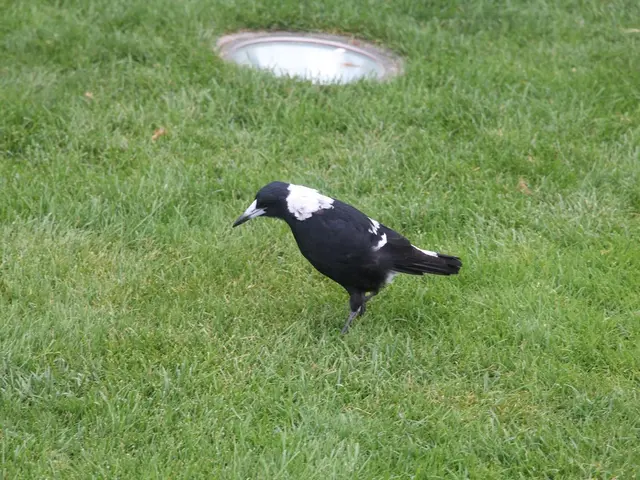Guide on Cultivating and Nurturing Globe Artichokes
## Cultivating Delicious Globe Artichokes: A Step-by-Step Guide
Globe artichokes, with their distinctive grey-green, jagged leaves and large stature, can bring a touch of Mediterranean charm to your garden. Here's an easy-to-follow guide on how to grow and maintain these delectable vegetables:
### Planting
1. **Site Selection**: Choose a sunny, warm location with well-draining soil. Ensure the plants have enough space—about 1 meter (3 feet) apart[1].
2. **Soil Preparation**: Remove weeds and incorporate organic matter like garden compost for improved moisture retention and nutrition[1].
3. **Choosing Material**: You can sow seeds indoors or directly outdoors. Indoor sowing 2 to 3 months before the last frost offers better results due to consistent warmth and pest protection[1][5].
4. **Sowing Seeds**: Plant seeds 6 mm (1/4 inch) deep in soil. Once seedlings develop roots showing through drainage holes, transfer them to larger pots[5].
5. **Transplanting**: Move plants outdoors in late spring or early summer when the threat of frost has passed, spacing them 3 to 4 feet apart[1][5].
### Watering
- **Moisture Levels**: Keep the soil consistently moist but avoid waterlogging, which can lead to root rot. Mulching around the plants can help retain moisture and suppress weeds[1].
### Pruning
- **Post-Harvest**: After harvesting the artichokes, cut off the flower stem close to the ground. This encourages new growth and prevents the plant from putting energy into seed production[1].
- **Annual Maintenance**: Prune dead or damaged leaves and stems in late winter or early spring to promote new growth and prevent disease[1].
### Harvesting
- **Timing**: Harvest artichokes when the buds are still tightly closed and reach about 3 to 6 inches (7 to 15 cm) in diameter[6]. - **Method**: Cut the artichoke off the stem with about 1 to 2 inches (2.5 to 5 cm) of stem attached to the artichoke. This helps prevent the plant from being damaged and promotes new buds to form[1].
### Other Care Tips
- **Division**: Divide and replant globe artichokes every four to five years to prevent overcrowding and maintain plant health[2].
- **Pest Protection**: Keep an eye out for pests like aphids and slugs, and use organic or chemical controls as necessary[7].
By following these steps, you can enjoy both the aesthetic appeal and the tasty produce of globe artichokes in your garden. From early summer, cut the immature flowerheads when large enough to eat—at least golf ball size[3].
It's important to note that globe artichokes are not related to Jerusalem artichokes but are relatives of cardoon (Cynara cardunculus)[4]. If left uncut, artichokes bear attractive thistle-like blooms[4]. The edible part of the globe artichoke is the base of the immature flowerheads[6].
[1] RHS. (2021). Growing globe artichokes. Retrieved from https://www.rhs.org.uk/advice/profile?pid=459 [2] RHS. (2021). Propagating globe artichokes. Retrieved from https://www.rhs.org.uk/advice/profile?pid=459 [3] Royal Horticultural Society. (n.d.). Growing globe artichokes. Retrieved from https://www.rhs.org.uk/plants/25766/Globe-Artichoke/details [4] RHS. (2021). Globe artichokes: facts. Retrieved from https://www.rhs.org.uk/plants/25766/Globe-Artichoke/facts [5] BBC Gardens. (2021). How to grow artichokes. Retrieved from https://www.bbc.co.uk/gardening/howto/howto_artichokes [5] BBC Gardens. (2021). How to grow artichokes. Retrieved from https://www.bbc.co.uk/gardening/howto/howto_artichokes [6] RHS. (2021). How to harvest globe artichokes. Retrieved from https://www.rhs.org.uk/advice/profile?pid=459 [7] RHS. (2021). Pests and diseases of globe artichokes. Retrieved from https://www.rhs.org.uk/advice/profile?pid=459
With the right care, globe artichokes can become a captivating addition to your home-and-garden lifestyle, not just for their Mediterranean flair, but also for the delightful produce they offer. By following this step-by-step guide, you can grow and maintain these vegetables in your garden, making your home-and-garden living more enjoyable and rewarding as you tend to your thriving gardening project.








